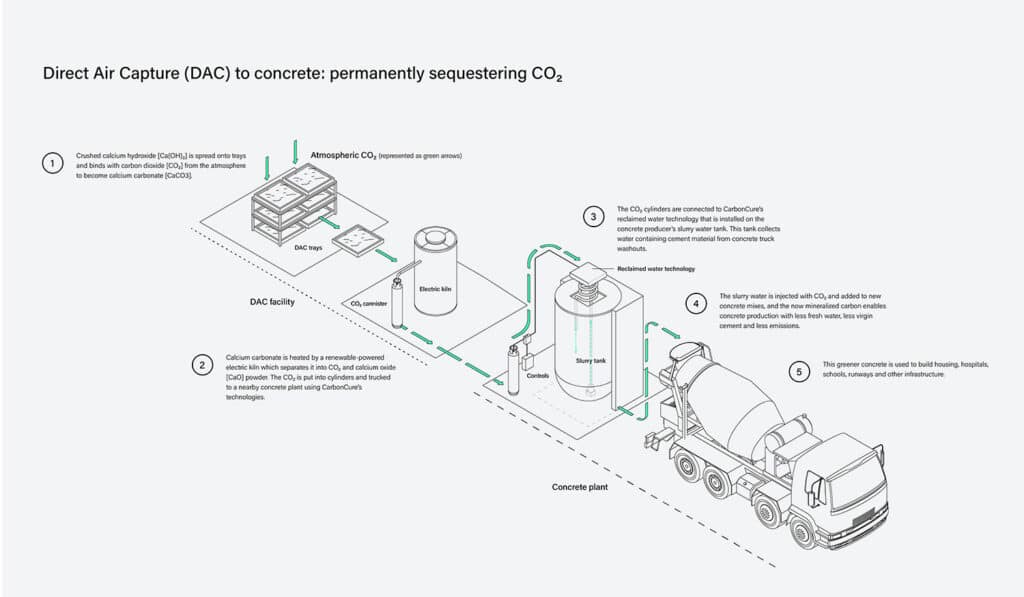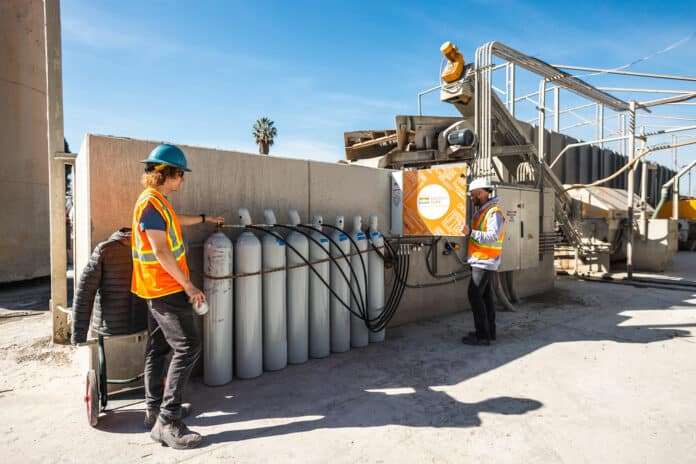Three groundbreaking new companies – named Heirloom, CarbonCure, and Central Concrete – have managed to capture carbon dioxide (CO2) via Direct Air Capture (DAC) and claimed to have permanently stored it in concrete for the first time.
Californian startup Heirloom captured CO2 from the atmosphere using their DAC technology at their headquarters in Brisbane, California. CarbonCure’s reclaimed water technology injected the captured CO2 into the process wastewater at a Central Concrete batch plant in San Jose, California. And Central Concrete used the CO2-treated wastewater to make fresh concrete, which was produced for a range of construction projects across the Bay Area.
The CO2 is durably sequestered in the concrete as calcium carbonate and will not be returned to the atmosphere, even if the concrete is demolished.
Heirloom currently runs, what it says, the only operational DAC facility in America. It uses limestone, an abundant, easy-to-source, and inexpensive material, to pull CO2 from the air. The limestone is broken down into calcium oxide rock and CO2 gas using heat from a renewable-energy-powered electric kiln. The captured CO2 gas is then permanently stored safely underground or embedded in concrete.
CarbonCure’s reclaimed water technology was used to store Heirloom’s CO2 at Central Concrete. The technology injects CO2 into reclaimed water (recycled water collected from washing out concrete trucks) at concrete plants. When injected, the CO2 immediately reacts with cement in the water and mineralizes, permanently storing the CO2 and stabilizing the cement for reuse. The CO2-treated slurry is then used in new concrete mixes.

“This demonstration project is a global milestone for carbon removal technology that confirms concrete’s enormous potential as a climate solution that can permanently store carbon in our most essential infrastructure – from roads and runways to hospitals and housing,” said Robert Niven, Chair and CEO of CarbonCure Technologies. “We’re thrilled to be collaborating with Heirloom and Central Concrete on this groundbreaking world first.”
This application of a DAC-to-concrete solution is a significant step forward in permanent atmospheric CO2 removal. As the world moves toward zero-carbon energy generation, the companies’ DAC technologies will play a key role in remediating past emissions and helping to decarbonize industries as they develop and scale carbon-cutting solutions.
“The science is clear: in order to reach climate goals, we must remove billions of tons of already emitted CO2 from the atmosphere each year,” said Shashank Samala, CEO of Heirloom. “This is an important step toward that future and shows the promise of DAC technologies combined with smart, permanent methods of sequestration.”
The world’s most-utilized building material, concrete, provides an important repository for permanent CO2 storage. With the global building stock expected to double by 2060, concrete presents a key opportunity to store immense quantities of carbon dioxide in our built environment.
